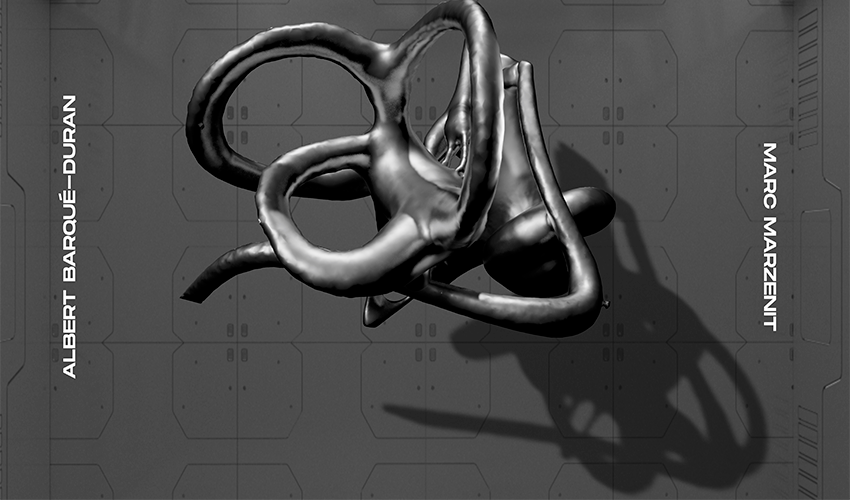Text by CLOT Magazine

Artist and researcher Albert Barqué-Duran and composer and musician Marc Marzenit are premiering today VESTIBULAR_1, an immersive audio-visual installation that induces the audience illusory sensations of self-motion in complete darkness by temporarily disrupting their vestibular functioning as part of the Ars Electronica programme. The duo had already collaborated on a previous project, The Zero Gravity Band (2018), an immersive installation of light and sound 360º that tries to induce sensations of zero gravity and an exhibition of prototypes and instruments designed to create arts and music in conditions of zero gravity and smart space suits.
This year, from September 9th to 20th, Ars Electronica 2020 will take place under the title of Kepler’s Garden, a tour that from Linz (Austria) expands to 120 other cities. For the first time, the festival becomes a sort of digital journey that will take visitors from all over the world to different biotopes and networked ecosystems. Ars Electronica Garden Barcelona is taking place at Arts Santa Mònica, showcasing historical works such as The Tangible Bild and The Endless Sandwich both by Peter Weibel and including Vestibular_1 by Albert Barqué-Duran & Marc Marzenit.
For VESTIBULAR_1 they explore the effects of hearing and motion further. The piece is based on the innovative research from the VeME (Vestibular Multisensory Embodiment) Lab at Royal Holloway (University of London), which investigates the role played by vestibular signals in the perception and representation of the body and the external world and how it affects aesthetic preferences.
The artists explain: Any organism moving through its environment receives a constant stream of sensory signals about self-motion: optic flow inputs from vision, proprioceptive information about the position of the body from muscles, joints and tendons, and inputs for acceleration via the vestibular system. This latter seems particularly important for self-motion.
Under normal circumstances, the brain optimally combines sensory signals for self-motion, which are successfully integrated to produce a coherent representation of the organism in the external environment. However, conflicts between sensory modalities may occur when sensory signals carry discrepant information. If the vestibular system is altered with conflicting sensory information, we easily realise that the usual way in which we perceive objects of human expressions, such as visual forms, music, and art, does dramatically change.
The installation can be seen at Centre d’Arts Santa Monica in Barcelona from 9th to 20th September 2020.






